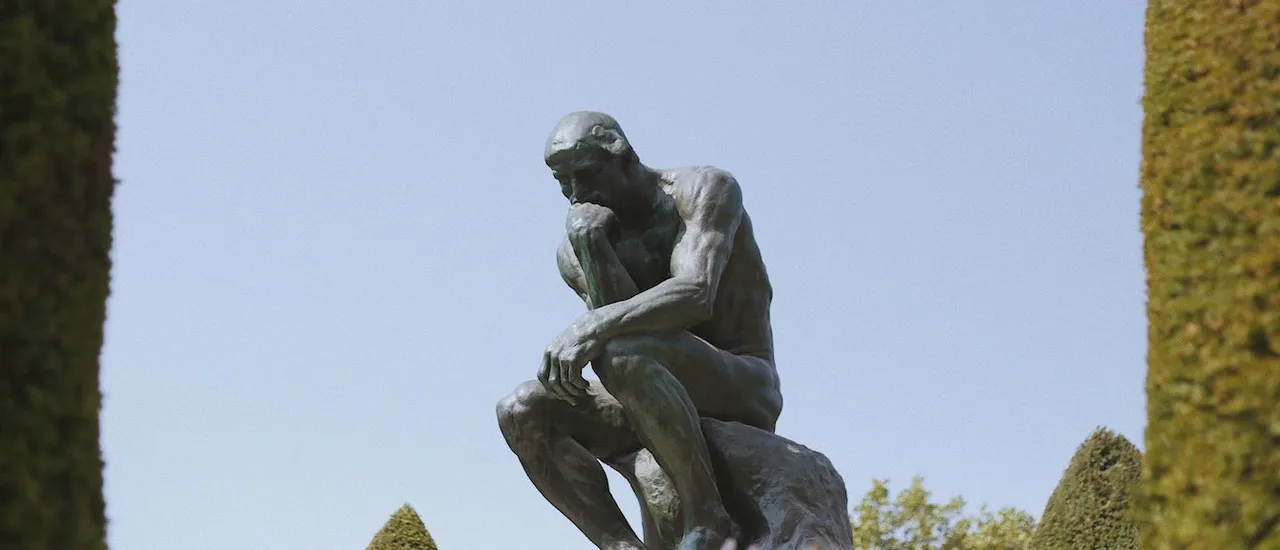What is the nature of the relationship between language and thought? Or, put another way, does language constrain, influence, or merely express thought? Sometimes known as the Sapir-Whorf Hypothesis, the idea that we might be limited in what we can think by the languages we speak has provided fertile ground for scientists and philosophers, not to mention authors of science fiction. Whether and how language influences thought has been one of the most controversial questions of modern linguistics. And it remains unresolved to this day, as new evidence continues to amass from experimental work in the cognitive sciences.
This course is an introduction to the debate: we will examine the various positions advanced over the years, the evidence used in their arguments, and, in the end, what is at stake for our conception of ourselves as rational beings.
Our grand tour will take us through:
- The linguistics of the movie Arrival
- Orwell and Newspeak
- Borges and the "Celestial Emporium of Benevolent Knowledge"
- The "22 words for snow" meme
- Cross-cultural differences in categorizing time and space
- Colour naming universals
- The gender of bridges
- The Pirahã controversy
This course is structured around reading key texts in the evolution of the debate. Since this is a profoundly interdisciplinary debate, the works we will be reading and discussing come not only from linguistics, but also anthropology, psychology, and cognitive science.
The readings have been chosen at a level where they are accessible to an educated lay audience. Any more technical details necessary to understand the material will be fully explained in class.
Course Goals
By the end of this course, you'll have a thorough understanding of the debate over the relationship between language and thought.
You'll learn:
- the main positions that have been taken in the debate and the best arguments for each
- the historical development of the debate and its relationship to larger intellectual trends
- what is at stake for our understanding of human nature
- what is at stake for society at large
Structure
The course will meet once a week on Zoom for two hours. This is a seminar-style course, which means that, each time we meet, we will review and discuss the week's topic, using a selected reading as a jumping-off point.
There will be one reading assignment every week, which should not take more than 2–3 hours to complete. It is important to complete the reading before class so that we can all be on the same page for the discussion.
Syllabus / Schedule
Week 1: Language, thought, and why it matters
What is the nature of the relationship between language and thought? This question has been the subject of heated scientific debate for almost a century. By the end of this class, you will understand the most common positions taken in this debate, what sorts of evidence has been used to argue for these positions, and the implications of these positions not only for our understanding of language but of human nature and society as well.
Week 2: Whorf and the anthropological tradition
The so-called Sapir-Whorf hypothesis did not emerge from a vacuum. It comes out of a larger anthropological tradition. In this class, we'll trace the genealogy of the concept of linguistic relativity from Humboldt, through Boas, and finally to Sapir and Whorf. We'll also look at what Whorf actually believed – does it match the pop-science version of the "Sapir-Whorf hypothesis"? Along the way, we'll see where the "22 words for snow" meme comes from and examine what a Hopi physics might have looked like.
Week 3: The universalist consensus and the cognitive revolution
In the middle of the century, the intellectual tide turned with the "cognitive revolution". Thanks to the work of Noam Chomsky, linguistics played a central role in this revolution. The cognitive revolution brought along with it the idea that minds are fundamentally alike by virtue of their innate cognitive capacities, and the language and thought debate shifted in a decidedly anti-Whorfian direction. For many of these scholars, language was merely a way to express thought, which operated in its own language, called "The Language of Thought" or "Mentalese". This class we'll examine the arguments for and against this position.
Week 4: Neo-Whorfianism and the re-emergence of the debate
In the 1980s and 1990s, the universalist consensus came to an end and a new form of linguistic relativity came back onto the intellectual scene. This "Neo-Whorfianism" was fuelled by new experimental work and new linguistic theories. In this class, we'll look at this work through the lens of the experimental study of colour naming and perception, which has seen much of the fiercest debate between universalists and relativists.
Week 5: The Pirahã affair
No discussion of the relationship between language and thought would be complete without a discussion of the most famous language used to argue against the universalist position: Pirahã. The Pirahã language has been argued to lack many features thought universal to language: e.g. numbers, colour terms, and embedded sentences. But is the story so simple? This week we examine the case for and against Pirahã exceptionality, and discuss what it tells us about the relationship between language and thought.
Week 6: The contemporary dimensions of the debate
This week, we finish our class by surveying the current landscape of the language and thought debate. Experimental research into the effect of language on thought is an active area. What are the major positions you'll find argued for in the literature of the last 20 years? What evidence are these positions based on? We'll look at several major studies to give you a flavour of what's going on now, focusing on two topics: space and gender.
Who Should Sign Up
No academic background is required. The readings are all aimed at non-specialists.
If you're interested in the nature of language or the human mind, this course is for you.
